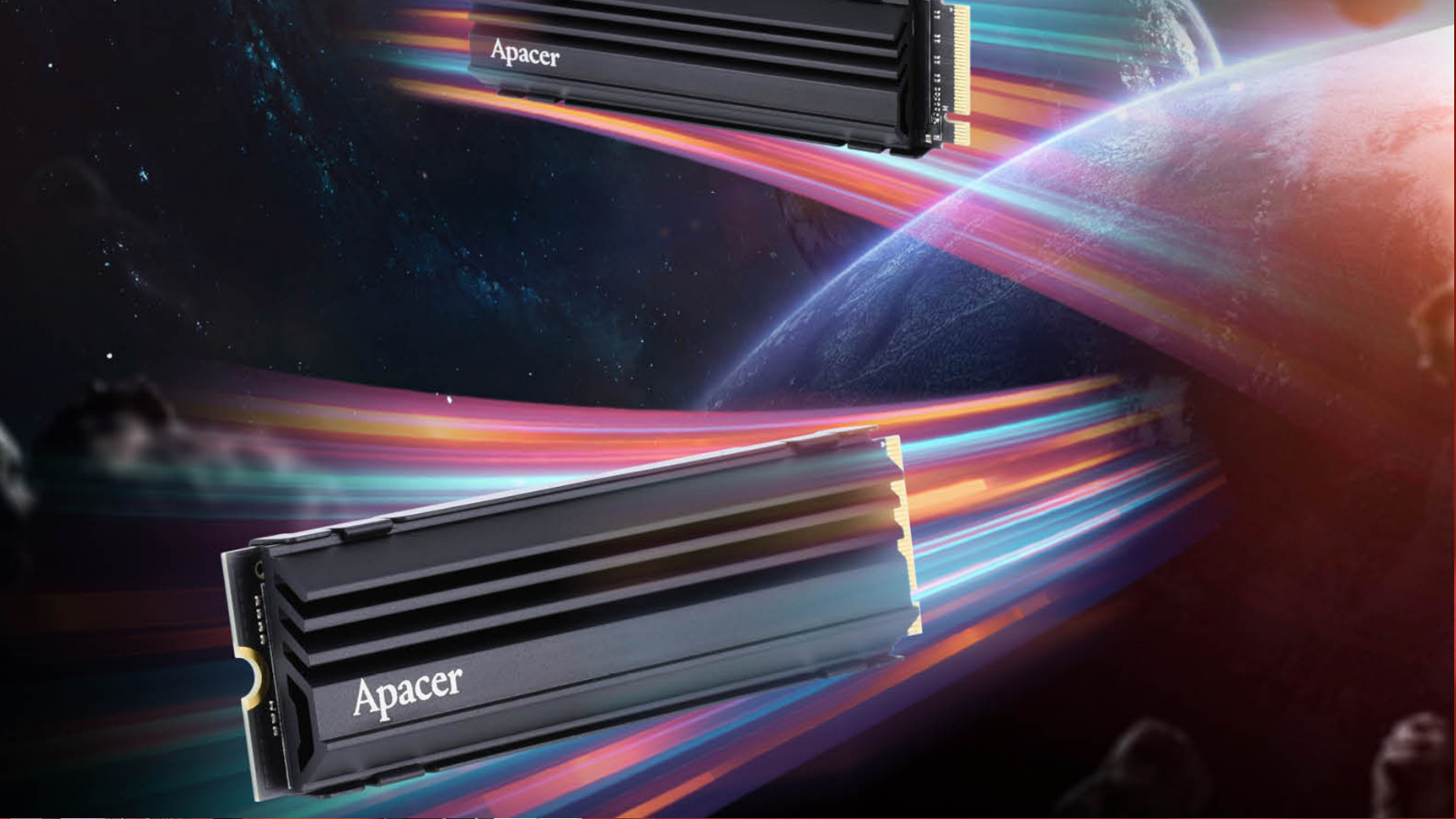World's first consumer PCIe Gen 5 SSDs can hit 13,000MB/s and still keep their cool
Blink and you'll miss it

Apacer has revealed the PCIe Gen5 SSDs running at up to 13,000MB/s read speeds at Computex 2022. In fact, two drives were revealed - the Apacer branded AS2280F5, and the Zadak branded TWSG5 (Apacer releases more gaming-focused hardware under the Zadak name).
Both can achieve a blistering 13,000MB/s seq. read speed and 12,000MB/s seq. write speed. It isn't the first time that we've seen PCIe Gen 5 SSDs with these kinds of speeds as Samsung announced its own PM1743 back in December 2021, but those were created specifically for use in enterprise servers so it wasn't exactly something you could just go out and buy for your own personal system.
Both Apacer SSDs however are consumer-ready. You'll need a PCIe 5.0-ready motherboard if you want to get the most out of them, but they'll also run at half speeds on a PCIe 4.0 MOBO thanks to backward compatibility.
As reported by PC Gamer, it's believed that both SSDs will be using Phison's recently announced PS5026-E26 controller. Looking at the evidence to back this up, the E26 tops out at 13,500MB/s seq. read and 12,000MB/s seq. write, though PCIe 5.0 actually tops out at 16,000MB/s. That's nothing to be concerned about though as it can take a while for an updated controller to get the most out of a new specification.
So what is the difference between the two? Well, the main difference is in the heatsinks. The AS2280F5 will only ship with aluminum cooling fins, while the TWSG5 has two options to choose from: the same metal cooling fins, or an ultra-thin graphene style.
Phison believes that the E26 controller could actually run cooler than many existing SSDs today, but it's still not clear just how much work needs to be done to prevent overheating. After all, Phison also predicted that M.2 SSDs will need more active cooling solutions in the coming years.
Still, both the Apacer AS2280F5 and the Zadak TWSG5 come with a five-year warranty which would provide some reassurance if you're concerned about keeping your system cool, or the risks of being an early adopter for new technology.
Sign up to the TechRadar Pro newsletter to get all the top news, opinion, features and guidance your business needs to succeed!
Analysis: next-gen adoption will be a slog
I'm not especially worried about the heatsinks of both these respective SSDs, but a lot of new developments in the computing space will need some love if they want everyday consumers to start adopting new-gen technology.
I can't find any information on the power draw or pricing of either of the PCIe SSDs, but solid-state drives typically draw less power than hard drives. Given they're faster, more economic and run silently, why do so many people still buy HDDs, especially when you can now get SSDs with up to 100TB of storage?
The answer is usually money. All of these benefits come with a hefty price tag compared to hard drives which can be very affordable for the equivalent storage, so despite moving at a snail's pace by comparison, there simply isn't much appeal for audiences like PC Gamers who find that the read and write speeds of their storage is less important than its actual capacity.
There are also diminishing returns for most everyday consumers. Will your average mid-30s PC user see a real difference with 13,000MB/s read speeds on everyday applications and games? Likely not, which makes it a hard sell when stacked against more affordable, but still relatively speedy alternatives.
Rome wasn't built in a day. We all know that the rollout of each generation of technology doesn't happen overnight, and it can take years for consumers to get on board with new developments - we only need to see how many people are still using DDR3 memory in their systems despite the launch of DDR5 back in July 2020 (though this is hindered by the fact that only Z690, B660 and H610 chipset motherboards are compatible with it).
Am I excited about this development? Oh yes, very much so, but I doubt we will see much of it in practice for a good few years unless the MSRP is low and the hardware avoids the clutches of scalpers and artificial inflation due to demand.
- This year, Computex is once again virtual, but we'll still be bringing you all the breaking computing news and launches as they happen, so make sure you check out all of TechRadar's Computex 2022 coverage.
Jess is a former TechRadar Computing writer, where she covered all aspects of Mac and PC hardware, including PC gaming and peripherals. She has been interviewed as an industry expert for the BBC, and while her educational background was in prosthetics and model-making, her true love is in tech and she has built numerous desktop computers over the last 10 years for gaming and content creation. Jess is now a journalist at The Verge.
